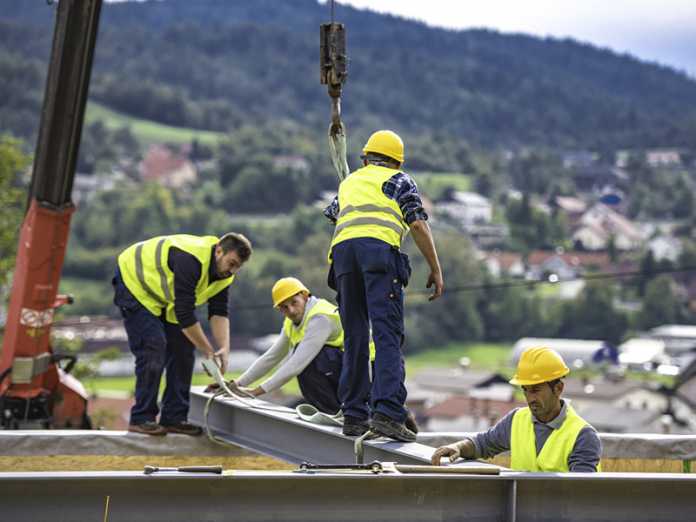By Sarah Douglass
Working on construction sites can be dangerous, especially when employers aren’t diligent in mitigating known hazards and ensuring that team members have the proper protective equipment and training.
According to the Occupational Safety and Health Administration (OSHA), four construction hazards frequently lead to severe injuries and fatalities. They are known as the “fatal four.”
If you are a construction worker, you should be aware of the four deadly hazards in your work field and take concerted steps to avoid them.
What are OSHA’s Fatal Four?
According to OSHA experts, the four construction site hazards that are the most likely to cause fatal injuries are:
- Falls
- Struck-by accidents
- Caught-in or -between accidents
OSHA’s “fatal four” are believed to be responsible for as many as three out every five construction-related deaths annually. Fortunately, project and safety managers have the power to reduce these deadly threats. They can provide the right work equipment, post the proper signage, ensure that adequate training is received, and require all team members to wear environment-specific personal protective equipment (PPE).
Identifying Unsafe Work Environments
One of the best things workers can do to protect themselves while working on a construction project is to refuse to work in unsafe conditions. If you work on a construction site and believe that your employer is not doing enough to prevent serious injuries, you should refuse to work until your concerns are addressed.
For instance, you may be asked to work on an elevated surface or structure without the proper fall prevention or fall arrest gear set in place. If scaffolding is damaged and has yet to be inspected and repaired, your employer is not legally allowed to punish you for refusing to mount it.
Preventing Electrocution
Workers on construction sites should be on high alert when seeing low-hanging utility lines and other overhead obstructions. It is also critical to identify all utilities before any work is started. This way, construction site workers can keep an appropriate distance away from hazardous infrastructures and take other necessary precautions. This is just as important at ground level as when working from scaffolds, ladders, lifts, or other elevated surfaces or equipment.
Avoiding Excavation Injuries
Excavation accidents account for a considerable number of construction site injuries each year. To avoid them, workers should never enter trenches or other excavated areas that are at least five feet deep unless a protective system has been put in place.
When excavating an area with pre-existing infrastructure it is also important to ensure there are no service lines or pipes that may be hit and damaged during the excavation process. Using a ground penetrating radar is a great way to ensure there are no underground services like electrical wires or pipes that may cause complications if struck during excavation.
Avoid Being Struck by Falling Objects
Everyone must make efforts to prevent “struck-by” accidents on construction sites. All people entering a construction site should wear safety helmets, steel-toed boots, and other protective gear.
Moreover, people working at great heights should always have their tools secured adequately to either the work surface or themselves. They should also be wearing proper fall-arrest equipment.
Other strategies for preventing “struck-by” accidents include:
- Never stand between fixed and moving objects
- Never walk below loaded lifting equipment
- Always wear high-visibility clothing.
Tips for Preventing Fatal Falls on the Jobsite
Donning fall prevention and fall arrest gear are among the most effective ways to prevent fatal falls when performing construction work. To ensure safe work practices, however, managers must take a proactive role in implementing and tracking training, verifying that preventative equipment is being used correctly, and staging and inspecting elevated work areas.
Damaged and improperly installed scaffolding, malfunctioning lift equipment, and other equipment-related problems can result in fatal falls even when employees do all they can to keep themselves safe.
Conclusion
Avoiding OSHA’s fatal four when working on a construction site is an ongoing team effort. Both employers and employees must do their part. When someone on a construction site becomes lax in ensuring that safety standards are being met, everyone’s well-being is put at risk.
And if everything else fails and you have fallen or been seriously harmed due to your employer’s failure to maintain acceptable work conditions, you can hire a worker’s compensation lawyer and get the compensation you are due for the time away from work and out-of-pocket medical expenses, which can quickly add up.
About the Author
Sarah Douglass has been writing all her life. What started as a passion soon became her life goal. At such a young age, she has already faced and overcame many obstacles. The instinct she developed through her life experience is coupled with an in-depth knowledge of the legal field. Sarah sees writing as a means to connect to others and help them overcome hard times.
Disclaimer: This article contains sponsored marketing content. It is intended for promotional purposes and should not be considered as an endorsement or recommendation by our website. Readers are encouraged to conduct their own research and exercise their own judgment before making any decisions based on the information provided in this article.

































































